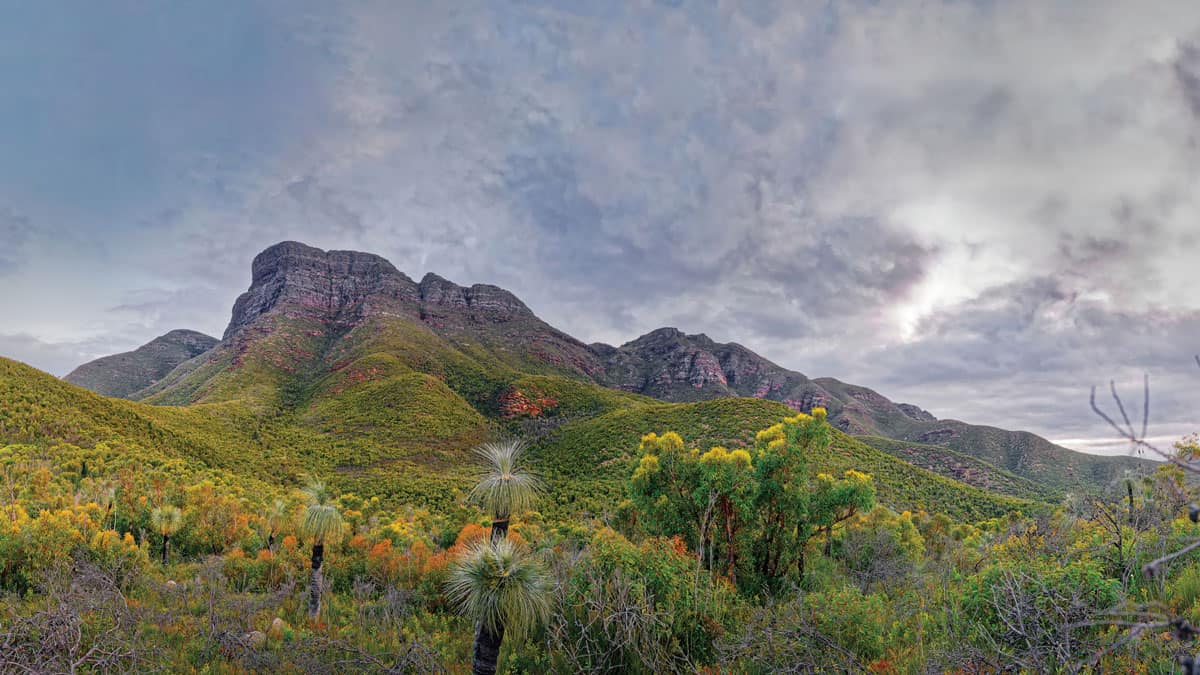Across south-west Australia, Aboriginal peoples have long built lizard traps by propping up rocks on granite outcrops. Now, it’s been found that these traps are not just culturally important but ecologically important too, providing reptiles with habitat and vital shade.
“Granite outcrops are ancient, biodiverse, and culturally significant ecosystems that are at risk from contemporary human disturbance,” says Susie Cramp from the University of Western Australia (UWA).
“Under the direction of Merningar Elder Dr Lynette Knapp, we used timelapse cameras to show that lizard traps … create reptile habitat.”
The project is one of several ecology projects at UWA documenting Noongar innovation and knowledge through cross-cultural collaborations.
Granite Country
Granite, an igneous rock, underlies much of the south-west part of the country. Weathering has formed many granite outcrops that rise above the largely flat landscape.
Granite outcrops are ecologically interesting features because they are like islands, acting as refuges for animals from fire and climate extremes.
“They are ancient, stable environments [which] provide consistent micro-climates and niches over the timescale of millennia,” Cramp and her co-authors write in their new paper, published in Pacific Conservation Biology.
Aboriginal peoples have long built traps on these granite outcrops – possibly for millennia – to provide habitat for and to catch reptiles. They consist of a slab of granite, around a metre long, propped up by a smaller stone to create space for lizards beneath. These traps are widespread across south-west Australia, and they have also recently been found in New South Wales and Queensland.
Previous research led by Cramp records that Elders in WA have shared that the traps are culturally significant and also play an important ecological role by providing habitat and shelter for reptiles. This new research aimed to confirm the ecological role of these traps, particularly as they are being lost or damaged through human activities.
To do so, the team set up a total of 135 cameras: three for each of the 45 different granite outcrops chosen, mostly within nature reserves and national parks near Albany.
The three cameras took data from three different types of sites at each outcrop – human-made traps, known lizard habitat (naturally uplifted granite sheets) and bare rock.
The images allowed the team to collect data about the reptile presence, occurrence, diversity and thermal range at each site to compare the difference in activity.
The reptiles included karda (goanna, Varanus rosenbergi), noorn (tiger snake, Notechis scutatus) and yondi (king skink, Egernia kingii).
Analysis showed that reptiles used the traps and the known habitat equally – and both much more than bare granite. The traps were used for activities including basking (to regulate their body temperature) and sheltering. This demonstrates that the traps provide significant habitat for reptiles.
“This is important because it raises awareness that these culturally significant and at-risk constructions are also ecologically important, and deserve greater levels of protection,” Cramp says.
Cross-cultural collaboration
The cross-cultural collaboration process involved Cramp working closely with Knapp to select the camera sites, discuss the data, and hear and record Knapp’s knowledge of the traps.
“Aunty Lyn and her family direct much of our research,” Cramp explains. “We focus on areas she would like to see better cared for, which involves going on Country together to record oral history videos, and then taking actions to care for Country.
“For granites this has involved raising awareness, to try and reduce impacts such as people driving over granite outcrops and stacking rocks.”
“Lizard traps are all about survival,” Knapp is reported as saying in the recent paper. “In Boornura, Autumn, with the turning of the months and the last rays of sun coming through the clouds, the reptiles would go out to sun themselves. They have to get energy from sunning and the rock to go underground for winter.
“These strategically placed lizard traps would be on the rock not far from where they were sunning themselves. So, all the women and children, or blokes, would come in behind and disturb him from sunning. The reptile would get a fright and run straight under the darkest thing could they see, and the shadow under the lizard traps was very easy to run into.
“And of course, people used to come along behind them and catch their meal.”
Knapp further notes that lizard traps offer lessons about caring for granite Country, by building a deep knowledge about the land, minimising disturbance of the ecosystem, and encouraging multigenerational thinking by connecting current generations to the ancestors who built the traps.
“They were put there, all those thousands of years ago, to build a pathway to you to be born,” Knapp writes.
The research was conducted on Merningar/Menang/Goreng Country.
Source link
Read More
thesportsocean
Read our previous article: Have you seen a white rainbow? That’s a fogbow!
